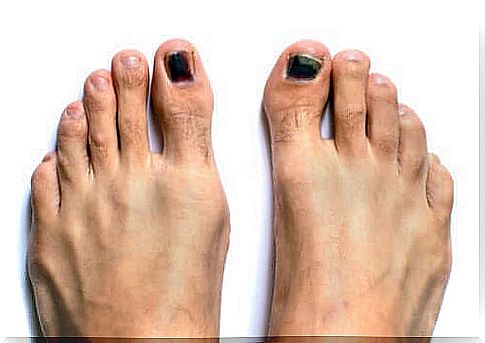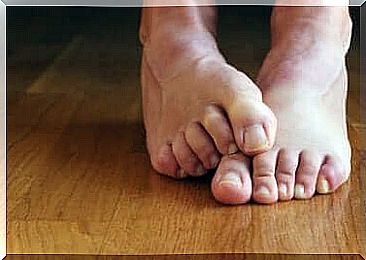Black Toenail: Causes And Treatment
Runners often get a black toenail, but there are other causes as well. Treatment is usually simple and can be done at home, but it is still important to see an expert. Learn more about this topic in our article today.

A black toenail is relatively commonly caused by repeated trauma and long-term pressure on the nail. Therefore, different groups of people are affected more often than others. Often, however, home remedies are used that are not always the best solution.
Runners in particular know what we’re talking about. When Running often a black toenail occurs. Marathon runners and trail runners are particularly affected, because long distances and large differences in altitude often have a negative effect on the toes.
The repeated trauma, as well as the constant pressure and the irregular surface, change the step and can trigger a subungual hematoma, i.e. a bruise under the nail. This will discolor the nail.
It is usually not a serious problem. Even if the cause is melanoma, there is no urgent danger to life. However, if the pain is intense, it can limit mobility.
Black toenail: causes
As already mentioned at the beginning, small trauma is usually responsible for the development of a black toenail. But this is not the only possible cause. We then detail the most common triggers that can lead to a subungual hematoma:
Continuous trauma
Continuous pressure and repeated minor injuries can result in a subungual hematoma. That’s why runners often suffer from it, because the shoe constantly presses on the toes.
The hematoma can only be light and not cause pain. But a black toenail can also be a major handicap for those affected. In severe cases, there is bleeding that appears under the nail.
There is also the possibility of a nail bed infection. Signs of this are redness and swelling around the nail.
It should not be forgotten that overlapping toes can also trigger trauma, which leads to a bruise under the nail. People who are born with overlapping toes suffer from continuous friction that could result in a black nail.

Accidents
In contrast to repeated, minor trauma, an accident can result in a subungual hematoma, for example if a heavy object falls on the foot. The blood vessels burst from the impact and a bruise forms.
Fungal infection
Fungal infections are another common problem that often starts between the toes and spreads to the nails. The nails usually become whitish or yellowish, but they can also turn black. This can be the case when a hematoma develops or simply because the pigmentation changes.
cancer
In rare cases, subungual melanoma can cause a black toenail. This is the most dangerous cause because it is a type of skin cancer that develops under the nail.
Overall, 5 percent of melanomas develop subungually, more than half of them on the thumb. In almost 9 out of 10 cases of melanoma on the feet, it develops on the big toe.
Black toenail: treatment
Black toenail treatment depends on the cause, with very simple methods but also complicated treatment options. Many runners use home remedies to remove the blood from under the nail through a drain.
If the subungual hematoma is clearly traumatic, drainage is necessary. If the blood exceeds the nail edge, it can be drained through a puncture.

If there is no drainage through the skin, the doctor may drill a hole in the nail to allow the blood to drain. Under no circumstances should you do this yourself at home, you must definitely see a doctor or podiatrist.
If drainage is not performed, the hematoma will press on the nail and be able to loosen it. This can cause the nail to fall off. A new nail then grows back. This is not dangerous, but it can slow the healing process.
Fungal infections are treated with antifungal drugs. But ointments do not penetrate the nail, which is why varnish is usually used. If this treatment does not produce results, the doctor may also prescribe oral medication.
Doctors remove subungual melanoma through surgery. The nail is completely removed in order to eliminate the tumor and allow it to heal. In this case, of course, no home remedy can help.









